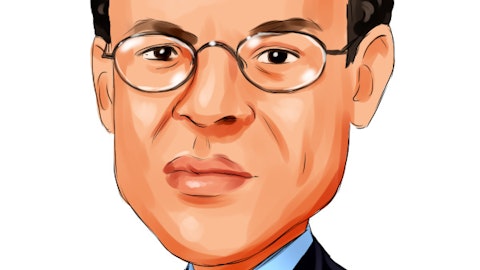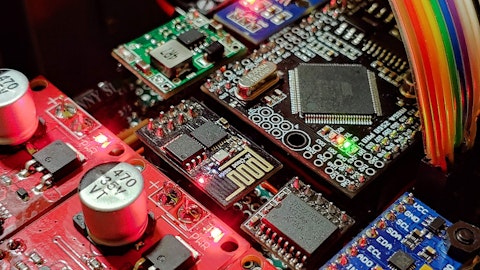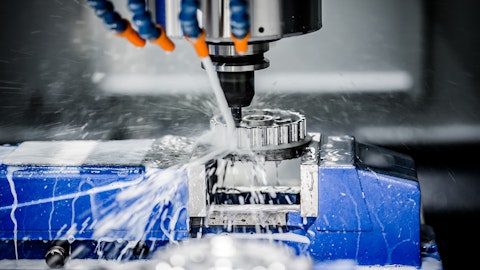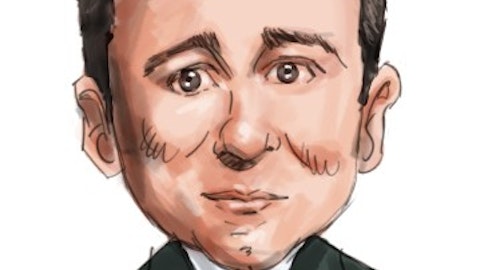Methode Electronics, Inc. (NYSE:MEI) Q2 2023 Earnings Call Transcript December 1, 2022
Methode Electronics, Inc. beats earnings expectations. Reported EPS is $0.75, expectations were $0.63.
Operator: Hello, ladies and gentlemen, and welcome to the Methode Electronics Second Quarter Fiscal Year 2023 Results Call. At this time, all participants are placed on a listen-only mode, and the floor will be opened for questions and comments after the presentation. It is now my pleasure to turn the floor over to your host, Mr. Robert Cherry, Vice President of Investor Relations. Sir, the floor is yours.
Robert Cherry: Thank you, operator. Good morning, and welcome to Methode Electronics fiscal 2023 second quarter earnings conference call. For this call, we have prepared a presentation entitled Fiscal 2023 second quarter financial results, which can be viewed on the webcast of this call or found at methode.com on the Investors page. This conference call contains certain forward-looking statements, which reflect management’s expectations regarding future events and operating performance and speak only as of the date hereof. These forward-looking statements are subject to the Safe Harbor protection provided under the securities laws. Methode undertakes no duty to update any forward-looking statements to conform the statement to actual results or changes in Methode’s expectations on a quarterly basis or otherwise.
The forward-looking statements in this call involve a number of risks and uncertainties. The factors that could cause actual results to differ materially from our expectations are detailed in Methode’s filings with the Securities and Exchange Commission, such as our 10-K and 10-Q reports. At this time, I’d like to turn the call over to Mr. Don Duda, President and Chief Executive Officer.
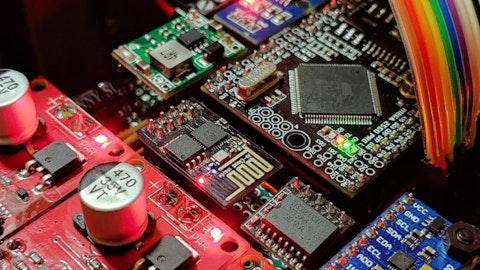
electronics-6055226_1280
Don Duda: Thank you, Rob, and good morning, everyone. Thank you for joining us for our fiscal 2023 second quarter earnings conference call. I’m joined today by Ron Tsoumas, our Chief Financial Officer. Both Ron and I will have opening comments and then we will take your questions. Let’s begin with the highlights on slide four. Our sales for the quarter were a record $316 million, this was achieved despite a significant headwind from foreign exchange, which was partially offset by strong sales in China, loss sales due to the COVID lockdowns in China in the first quarter were recovered in the second quarter. These China sales recoveries are now behind us. Also helping to offset the foreign exchange headwind we’re ongoing material spot buy and premium freight cost recovery efforts.
Driving our overall sales performance was a record quarter for sales in our Industrial segment of over $100 million. This surge in sales was driven by power distribution solutions, both for data center and EV applications and by commercial lighting. Some of the increase was related to the China lockdown sales shift. That aside, it is clear that we are successfully executing our strategy to grow our industrial sales and better balance the business mix between the automotive and industrial segments. In the quarter, we continue to face ongoing cost increases, due to the general inflation in material and labor, as well as supply chain challenges, which resulted in remedial actions such as stock buys and expedited shipping. We continue to work relentlessly with our customers to share the absorption of these increased costs.
We are gaining traction in these efforts, but our ability to pass along price increases will lag as a matter of process as long as high inflation continues. On the order front, we had another solid quarter with over $65 million in annual program awards. These programs are driven by power and lighting applications, two of our key growth opportunities. Turning to EV activity, sales in the quarter reached 20% of our consolidated total. This percentage matches our guidance for the full-year. Of the total awards in the quarter, over 80% were in EV applications with most of them being power distribution solutions. In the quarter, we continue to reduce debt, which is at its lowest level since the Grakon acquisition in 2018. Just after the end of the second quarter, we amended our credit facility, which increased our debt capacity.
This gives us additional resources and flexibility to fund inorganic growth. During the quarter, we purchased approximately $20 million of stock as of the end of the second quarter we now have approximately $97 million remaining in our buyback authorization. This buyback program remains a key part of our capital allocation strategy. Moving to slide five. Methode had another solid quarter of business awards. The awards identified here represent some of the key wins in the quarter and represent $66 million in annual sales at full production. As a reminder, the full launch timing of most of these programs could be anywhere in the range of one to three years from now. Also while the majority of the dollar-value of these awards are for new programs, some of these awards are for extensions or volume increases on existing programs.
At the top of the list our EV programs representing most of the dollar-value. The awards are mainly for power products, associated with the skateboard architecture such as bus buyers for the battery, inverter and motor, as well as products such as connectors and distribution units. The awards are also from both traditional automakers, as well as EV focused manufacturer. EV continues to be a solid growth engine for Methode. In other areas, we are awarded programs for lighting and power solutions for applications in auto, data center, defense and energy. Overall, it was a successful quarter for awards that will continue to drive organic sales growth. Furthermore, the our pipeline of future awards remains robust. That said, the ongoing inflationary cost environment, geopolitical risk and now an increased foreign currency headwind has caused us to moderate our near-term outlook.
To conclude, Methode delivered strong sales in the quarter, driven by our efforts in power and lighting solutions. Furthermore, Methode is expecting another record year for sales and continued growth in EV applications. Lastly, we are reaffirming our three-year organic sales compounded annual growth rate target of 6%. This target demonstrates that our business model is not just healthy, but is prospering from the strategic steps that we have taken to grow the business. At this point, I’ll turn the call over to Ron, who will provide more detail on our second quarter financial results and outlook for the full-year. Ron?
See also 11 Best Aggressive Stocks To Buy Now and 15 Biggest Ice Cream Companies in the World.
Ron Tsoumas: Thank you, Don and good morning, everyone. Second quarter net sales were a record $315.9 million, compared to $295.5 million in fiscal ’22, an increase of $20.4 million or 6.9%, led by record sales in the Industrial segment. This quarter sales were driven by strength in power distribution solutions for both data center and EV applications and by lighting solutions for commercial vehicles. The quarter also benefited from approximately $15 million of sales recovered from Q1 through the COVID lockdowns in China. As Don mentioned, the Q1 China sales recoveries are behind us. Also helping sales was $5.8 million of stock buy and premium freight cost recovery. Partially offsetting these positive factors was an unfavorable currency impact on sales of $22.2 million.
Excluding the spot buy and premium freight cost recovery and foreign currency impact. Sales increased by $41.2 million or 14.2%. EV product applications amounted to 20% of sales in the quarter. We still anticipate electric and hybrid vehicles sales to represent 20% of our full-year fiscal ’23 consolidated sales. Lastly, on sales, the percentage of sales in the automotive and industrial segments in the quarter was 62% and 33%, respectively. The industrial segment is clearly becoming more prominent to the overall company. Second quarter income from operations decreased 1.2% to $32.8 million from $33.2 million in fiscal year ’22, mainly due to higher selling and administrative expenses, as well as unfavorable foreign currency translation. The higher selling and administrative expenses were mainly related to lower annual performance based compensation in the prior year.
The leverage from the higher sales in the quarter was more than offset from the impact of higher expenses and currency translation. Second quarter diluted earnings per share increased 4.2% to $0.75 per diluted share from $0.72 per diluted share in the same period last fiscal year. The higher sales more than offset the negative impacts from the foreign currency translation and higher effective tax rate. In addition, lower net interest expense contributed to the increased income before income taxes. The effective tax rate in the second quarter was 17.4%, as compared to 16.7% in fiscal year 22. The increase in the effective tax rate was mainly due to mix of jurisdictional earnings. Please turn to slide eight. Second quarter gross margins were 23.5%, an increase of 10 basis points, as compared to 23.4% in fiscal year ’22.
The higher sales in the quarter were the main contributing factor, mostly offsetting the increased sales was higher materials and other inflationary costs. Also weighing on gross margin was $5.8 million in pass through recovery sales at zero margin. Second quarter selling and administrative expenses as a percentage of sales was 11.6%, compared to 10.6% in fiscal year 20, a 100 basis point increase. As I previously mentioned, the increase was mainly a factor of lower annual performance based compensation in the prior year. Also higher professional fees contributed to the increase. Our historical selling and administrative expense as a percentage of sales is typically in the range of 11% to 12%, as it was this quarter. Second quarter operating income margin was 10.4%, as compared to 11.2% in fiscal 22 and 80 basis point decrease.
The higher selling and administrative expenses more than offset the leverage from the higher sales in the quarter. Over time, we expect our consistent cost recovery efforts, including price increases, will lead to improved margin performance. Please turn to slide nine. Shifting to EBITDA, a non-GAAP financial measure, second quarter EBITDA was $46.1 million versus $47.4 million in the same period last year, a 2.7% decrease. EBITDA was negatively impacted by higher costs due to material inflation and unfavorable foreign currency translation. The impact from these factors was partially offset by higher sales. Second quarter EBITDA margin was 14.6% versus 16% in the same period last fiscal year, a 140 basis point decrease. While our margin was down in the quarter, we clearly have the potential leverage our higher sales trajectory over the longer term as we continue to mitigate the challenging cost environment.
Please turn to slide 10. Year-to-date, we have reduced gross debt by $6.5 million and since our acquisition of Grakon in September 2018, we have reduced gross debt by over $150 million. We ended the second quarter with $129.6 million in cash. During the quarter, we bought back shares for $19.7 million bringing in a fiscal year-to-date total to $31.6 million. Program to-date, we have bought back 103 million of shares leaving $97 million remaining for purchases under the Board authorization as of the end of the second quarter. Net debt, a non-GAAP financial measure, increased by $35.9 million to $74.4 million from $38.5 million at the end of fiscal ’22, mainly due to the share repurchases of $31.6 million and some unfavorable working capital changes.
Our debt to trailing 12-month EBITDA ratio was approximately 1.3 and our net debt trailing 12-month EBITDA ratio was approximately 0.5. We recently amended our credit facility, which increased the revolving credit commitments to $750 million from $400 million. And in addition, there is a $250 million accordion feature, which can be activated with the lender’s consent. We believe the increased capacity will offer the company more flexibility from a capital allocation perspective, especially for inorganic growth initiatives. The details of the credit facility can be found in our recent 8-K filing. Please turn to slide 11. Second quarter cash from operating activities was $15.4 million, as compared to $27 million in fiscal year 22. The decrease of $11.6 million was primarily due to increased accounts receivable as a result of the record sales in the second quarter.
Second quarter capital expenditures was $8.4 million, as compared to $5.4 million in fiscal 22, an increase of $3 million. The increase was mainly a function of the lower level of spending in the prior year quarter as the spending of level of this quarter was also a bit lower than anticipated. This is due to timing and not due to a concerted effort to reduce CapEx. Second, free quarter cash flow a non-GAAP financial measure was $7 million, as compared to $21.6 million in fiscal 22, a decrease of $14.6 million. The decrease was primarily the result of higher accounts receivable and higher CapEx during the quarter. We expect cash flow to improve in the remainder of fiscal year 23 as we target reduced inventory levels and other positive working capital initiatives, combined with increased net income, all while supporting increased CapEx. We have a strong balance sheet and we will continue to utilize it by investing in our businesses to grow organically and by pursuing opportunities for inorganic growth.
Please turn to Slide 12. Regarding fiscal 23 guidance. It is based on management’s best estimates and are subject to change due to a variety of factors including the ongoing semiconductor shortages, other supply chain disruptions, inflation, economic instability in Europe both short and long-term supply chain rationalization, successful cost recovery actions restructuring efforts and the ongoing impact from the COVID-19 pandemic, especially in China. While we have experienced some success in recouping cost recoveries, we expect these headwinds will be with us, at least through the remainder of fiscal year 23. The expected revenue range for fiscal year 23 has been narrowed to $1,170 million to $1,200 million. The lower end of the previous range was raised $10 million and the upper end was reduced by $10 million leaving the midpoint unchanged.
In keeping with our historical cadence, we expect a sequential dip in 3Q sales due to seasonality, followed by a sequential increase in Q4 sales. The expected diluted earnings per share range has been updated to $2.70 to $2.90. With the lower end unchanged and the upper end reduced by $0.20, thus reducing the midpoint by $0.10. A key reason for the reduced earnings per share midpoint is an increase in negative foreign currency translation. And as such, our new EPS guidance range reflects the current foreign currency rates as of the end of the second quarter. Also increasing uncertainty for the second half of the year are the execution of cost recovery actions, as well as potentially product mix. Our other guidance assumptions have been updated as follows: our estimated annual effective tax rate is now 17% to 18% narrowed from 16% to 18%.
It does not include any potential discrete tax items. We anticipate CapEx of between $40 million and $45 million narrowed from the range given in the first quarter as we gain better visibility and the remainder of the year spending. Estimated depreciation and amortization expense have been lowered to $50 million to $55 million from $54 million to $58 million to the lower estimated CapEx for the remainder of the year. As a reminder, based on the strong bookings we have realized over the past two fiscal years, much of which is for the EV market. We previously announced a three-year organic sales compounded annual growth rate target of 6% with fiscal year 22 as the base year. The CAGR considers the anticipated roll offs of all relevant programs and reinforces that our organic growth strategy is putting the company on a solid sales trajectory.
Don, that concludes my comments.
Don Duda: Ron, thank you very much. We are ready to take questions.
Follow Methode Electronics Inc (NYSE:MEI)
Follow Methode Electronics Inc (NYSE:MEI)
Operator: Ladies and gentlemen, the floor is now open for question. Thank you. Our first question is coming from Luke Junk with Baird. Please go ahead.
Luke Junk: Thank you. Good morning, thanks for taking my questions. Don, just to start hoping you could give us your updated thoughts on the macro especially specific to auto. Would be most interested in your updated views on China right now, in light of the recent COVID developments there as well? Any current thinking on energy risks in Europe and based on the prepared remarks, am I hearing that China may have impacted your thinking on the updated guidance specifically?
Don Duda: Let me answer that one first. It was a good quarter. In China, some of that was catch up, as Ron talked about. We are — what’s the biggest risk for us. We are concerned about shutdowns in China. We have seen some of our customers slowed down their releases, particularly in the data center. So we’ve taken that into account in our guidance, but we do see a little slowing and we are apprehensive about shutdowns of those that we saw that in the fourth quarter last year and the first half of the first quarter, those were dramatic for us and I’m pleased we did probably recover all of that, but that’s probably our number one concern. As far as Europe, we’re taking a little bit of a wait-and-see approach. I’m not as concerned, but we are seeing softening in our e-bike business, that we view that as temporary, but that came into play into our thinking and guidance.
And as Ron pointed out, we did not — we lowered the high end, because we just didn’t think of all the facts that I just talked about. We didn’t think that was likely to occur particularly well, also with the FX effect, because that was not taken into account when we initially gave guidance. Ron?
Ron Tsoumas: Yes. That those two items are our biggest areas of concern and obviously the dollar against the euro and that has strengthened in the last — has weakened in the last couple of weeks, so we’ll see where FX ends up the remainder of our fiscal year.
Don Duda: But Luke to your energy question as far as Methode facilities are concerned, we are operating in multiple. We’re operating in Egypt and we’ve smaller facility in Belgium, but the two major facilities should not be impacted, but our customers could be impacted, which would have a direct effect on ourselves. I think we’re okay perhaps maybe there might be an issue in Belgium, but it will be the effect on our customers that could cause us to have issues.
Luke Junk: Okay, great, thanks for all that. And then second question for Ron, just regarding working capital inventory of course it’s been ramping in the last year plus or so, but it kind of planned out this quarter instead, there is a big step up in AR side to the higher sales, can you just expand on how you’re thinking about working capital into year-end and into next year both as it relates to cash flow, which already commented on to some extent, but I’m wondering maybe more importantly strategically relative to the current environment as well?
Ron Tsoumas: Yes, so we clearly, look we had a very strong quarter in the AR especially was negatively impacted. We expect that to turn around, I mean, if you look at the midpoint of our guidance from the revenue perspective, it’s going to be a little less than where we were for this fiscal, the first half of the fiscal year. So we expect improvement in that. We are pleased to see the inventory at least turn it could put on that and we expect some improvement over the next six months on that perspective though it will likely be a gradual improvement. So with more pronounced improvements as we get through some of our make where we sell strategy and localize things are nearshore things a little bit more, we would expect inventory improvement certainly in the next fiscal year as well. So we clearly haven’t been up to the Methode historical standards in terms of how we generate cash, but we are on a trajectory to get that to be where we more had historically been.
